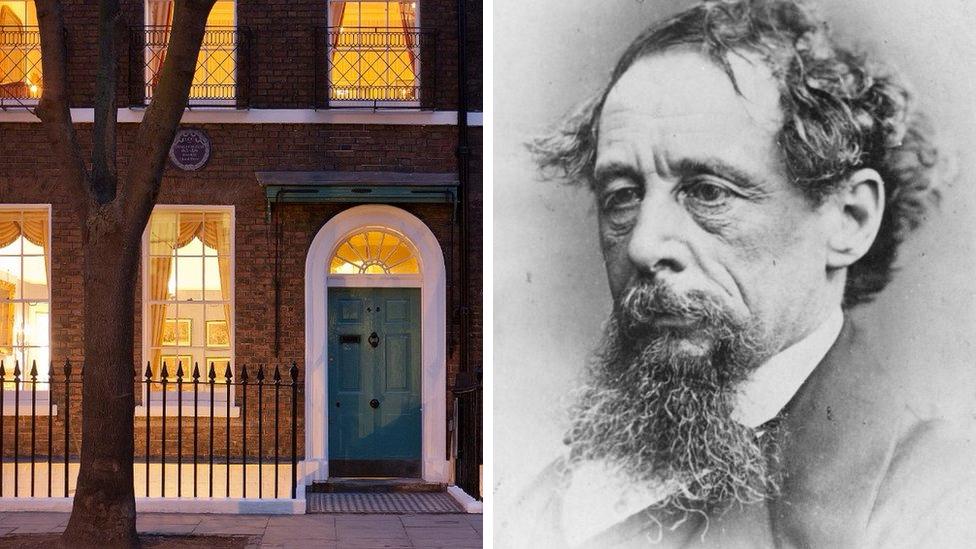Coronavirus: Spending lockdown in Henry VIII's palace
- Published
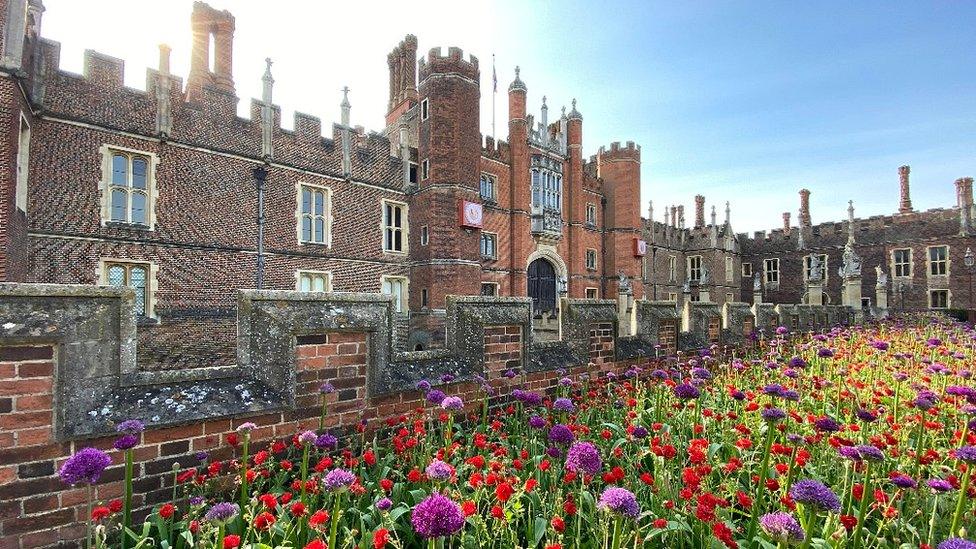
Hampton Court Palace has 1,300 rooms and apartments and was a favourite residence of Henry VIII
The Spring Bank Holiday would usually see thousands of tourists descend upon the UK's historic palaces, mansions and stately homes.
But these incredible buildings and gardens, which were once homes for royals and the super rich, are being occupied by just a few people who are maintaining them during the pandemic.
What is it like living and working in these now deserted houses and grounds?
'The formal garden is my running track'
Lucy Hutchings is spending lockdown in the grand confines of Hampton Court Palace, external - once a favourite residence of Henry VIII.
"I do feel incredibly fortunate. There are definitely worse places to be locked down than a palace," she says.
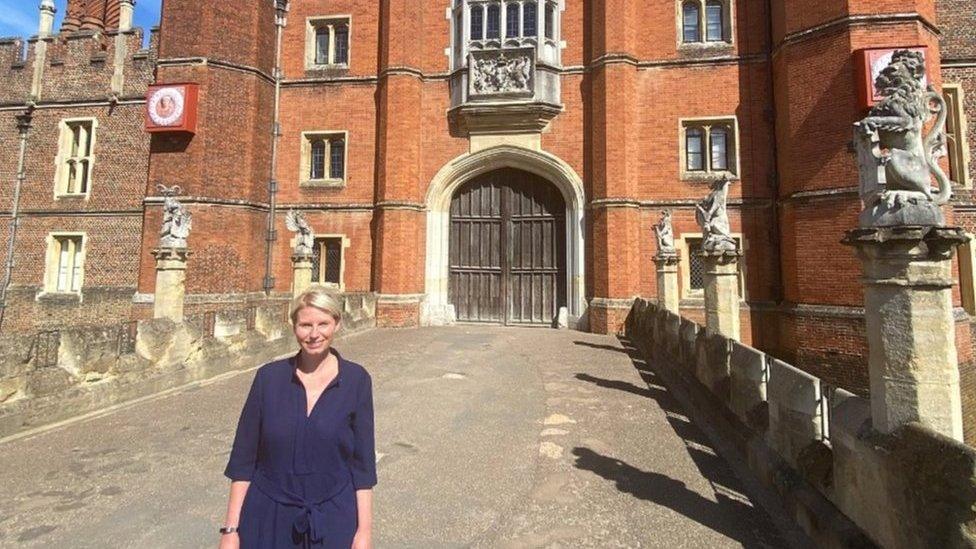
Lucy Hutchings is the head of Hampton Court Palace

The complex beside the River Thames in south-west London was for many years home to the Tudor king and is rumoured to be haunted by his third wife Jane Seymour. It was later home to Oliver Cromwell and eventually opened to the public by Queen Victoria.
Some 21,000 visitors would normally pass through the doors during Spring Bank Holiday and various events like jousting contests had been planned for this weekend.
"We were expecting a record-breaking year. It's really gruelling, particularly given the nice weather," says Lucy, who is head of the palace. However, she and others on site are trying to make the most of situation.
"Having the keys to wander around a palace is so special. We've got 1,300 rooms here so I'm using the opportunity to explore rooms I've never been to before.
"I've [also] taken up jogging - the formal garden has become my personal running track, which is good fun."

Few people have been able to see this year's garden displays
But living in a royal residence is not all fun and games. With a building that is almost 500 years old and only a skeleton staff to keep it in order, there is plenty of work to do.
The royal ceremonial dress collection, including clothing that belonged to Queen Victoria and Princess Diana, has had to be moved into a freezer to stop pests attacking it. The gardens need to be maintained and weeded. The many rooms are being cleaned and dusted.
Lucy says "it really has been all hands on deck" and in most cases, a lot of learning on the job.
When the chimes of Hampton Court's 16th Century astronomical clock went wrong, specialists had to explain how to fix its Tudor workings by FaceTime.
The 37-year-old added: "We initially had to figure out things like how the bins are collected - for the first few weeks we were living in our own filth but now we're sorted."
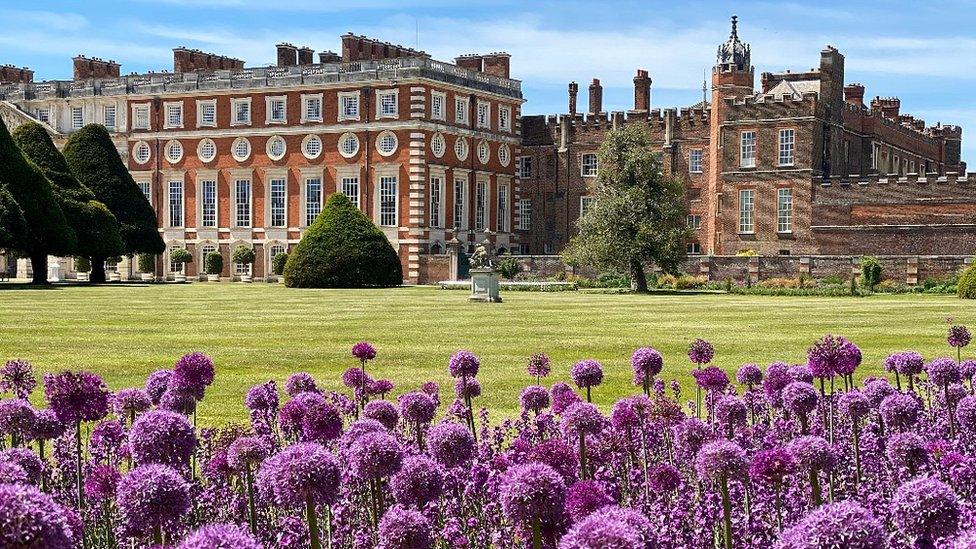
While the downtime has given staff the opportunity to do jobs that would have been hard to schedule with visitors present, Lucy says they are all "so looking forward" to when the building can open again.
"It's so odd how quiet it is here and quite sad. While it's wonderful to have this space to myself, it's meant to be bustling and busy.
"Spaces like this are meant to be enjoyed."
'It feels like time's stood still'
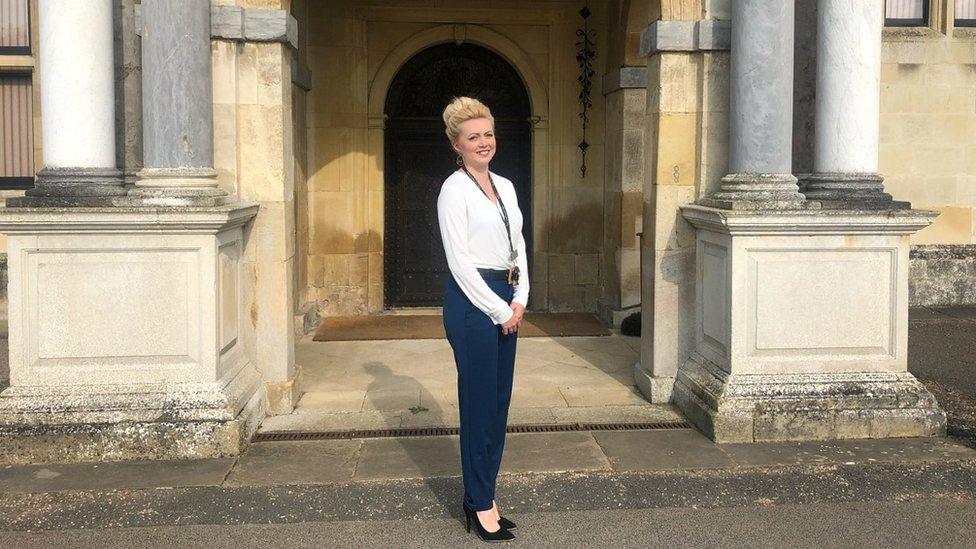
Property supervisor Franchesca Derry lives in the grounds of Audley End House
When it was built in the early 17th Century, Audley End House, external, near Saffron Walden, Essex, was considered one of the greatest mansions in England.
Surrounded by 100 acres (40 hectares) of park, sculpted by famous landscape architect Capability Brown, it attracts large crowds keen to look around the magnificent Jacobean building.
However, this year it is lacking the hustle and bustle its staff have come to expect.
"It feels quite surreal... We'd usually be having events and activities but instead it feels like time's stood still," says property supervisor Franchesca Derry.
You might also be interested in:

The Jacobean mansion is set in 100 acres of parkland and normally attracts large crowds
The 24-year-old, who has been working at the grand house for two years, is living with her partner in a building in the grounds.
A few other essential staff like gardeners and grooms who care for the site's five horses are also dotted in other properties, but all are keeping socially distant from one another, adding to the eerie calm.
While she is missing the guests who would usually fill up the many manicured lawns, Franchesca says there have been benefits to the quiet.

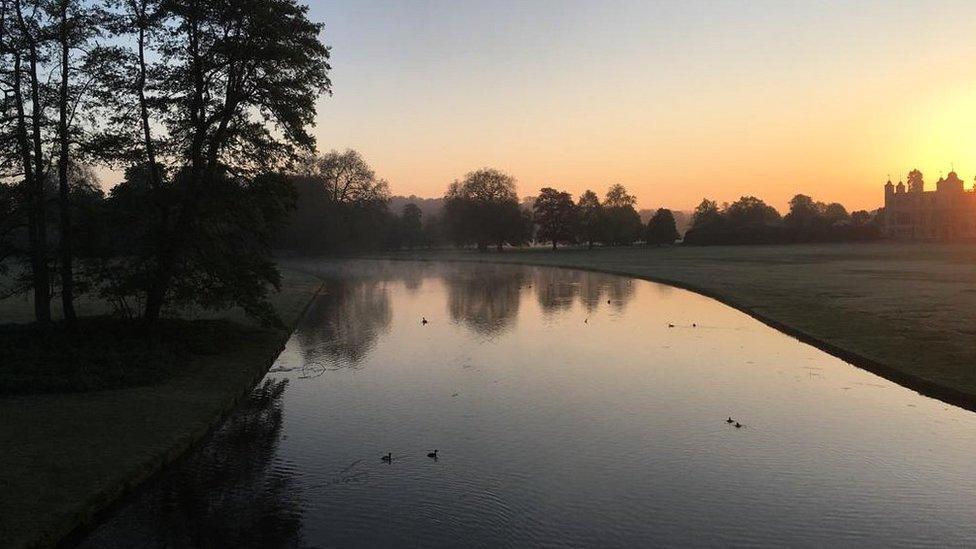
"We've had the spring bloom and it's so peaceful here which has led to an increase in wildlife. We have seen an increase in Muntjac deer roaming the grounds freely, along with herons and egrets patiently waiting by the river for their next catch.
"Ducks have also set up home within the service wing as it is much quieter and two Egyptian geese have made Audley their home over the last couple of months.
"It's been such an awful time but I do feel lucky to be isolated in such a beautiful place," she says.
'The peacocks have no-one to show off to'

Instead of looking after tourists, Sarah Johnson is having to deal with Powis Castle's peacocks

While the English wildlife seems to be enjoying the peace, there are some over the border in Wales that are less fond of the enforced quiet.
With no visitors to entertain, the peacocks at Powis Castle, external have been harassing the few staff and gardeners who are working at the site.
"They're creatures who like to show off, but they've got no-one to show off too," says visitor experience manager, Sarah Johnson.
"[And] they are not good when it comes to social distancing."
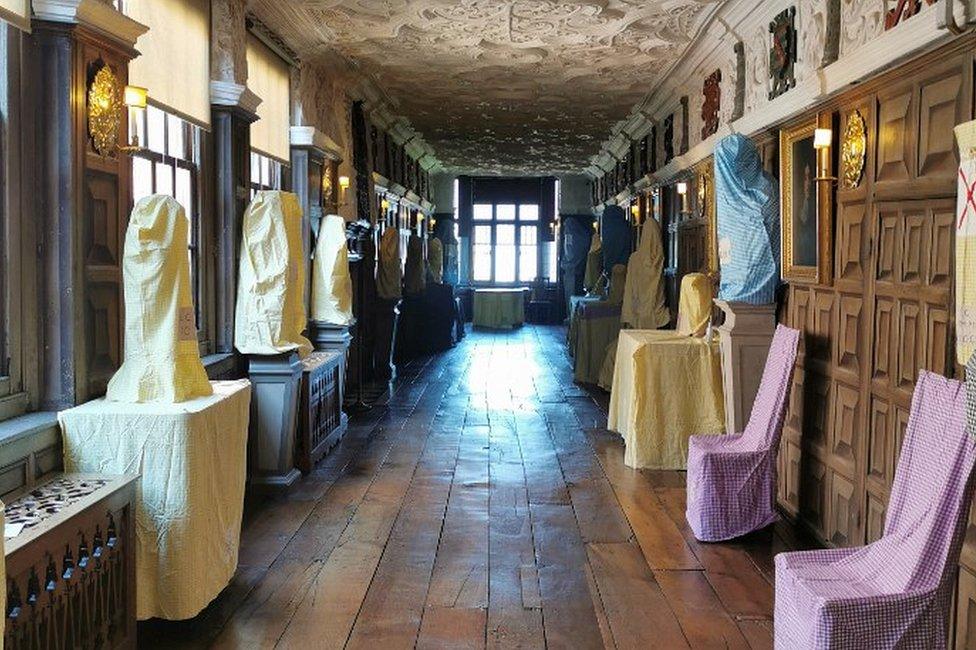
The interior of the castle has been "put to bed" so that everything is in order when visitors return
The site was built as a fortress in the 1200s and is now known for its unique, medieval gardens, orangery and original statues.
Sarah lives near the National Trust property and visits once a week to help with the numerous tasks involved in "putting the house to bed", including cleaning and safely storing the 2,000 items in the castle's collection.
"I'm learning different tasks and seeing a different side to the place," she says.
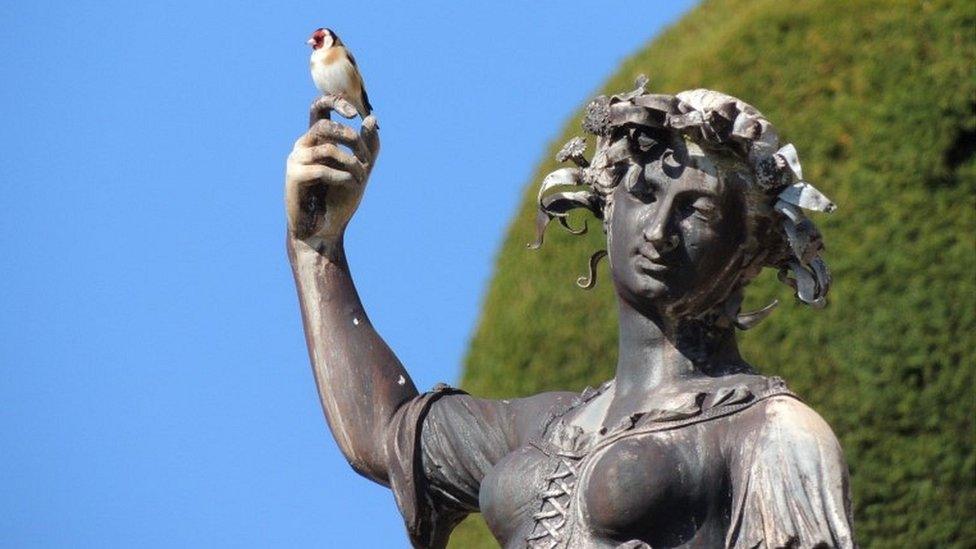
The gardens are known for their statues
Like other historic properties, they would have expected a bumper bank holiday and Sarah says it is "strange that no one is around".
"It's very different here. We're missing our colleagues and visitors. We're really looking forward to when it's finally safe to reopen".
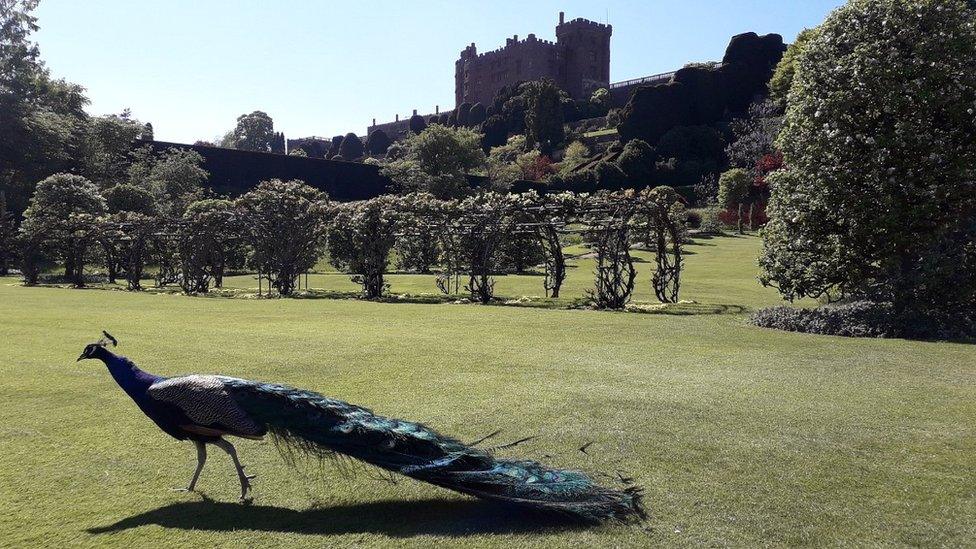
The castle's peacocks are missing the tourists - and their food

RISK AT WORK: How exposed is your job?
SCHOOLS: When will children be returning?
EXERCISE: What are the guidelines on getting out?
THE R NUMBER: What it means and why it matters
A SIMPLE GUIDE: What are the symptoms?

.
- Published12 May 2020
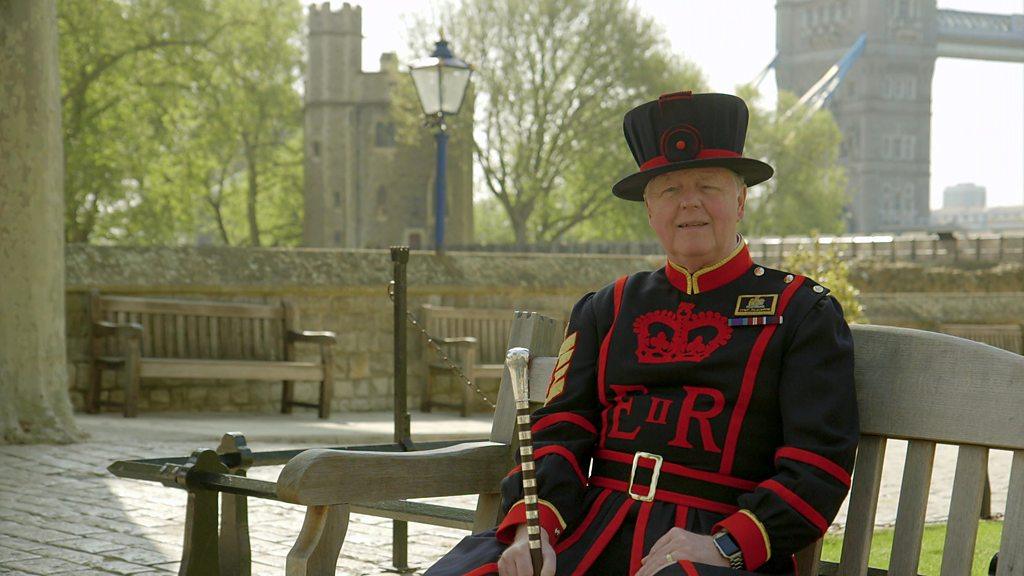
- Published2 May 2020
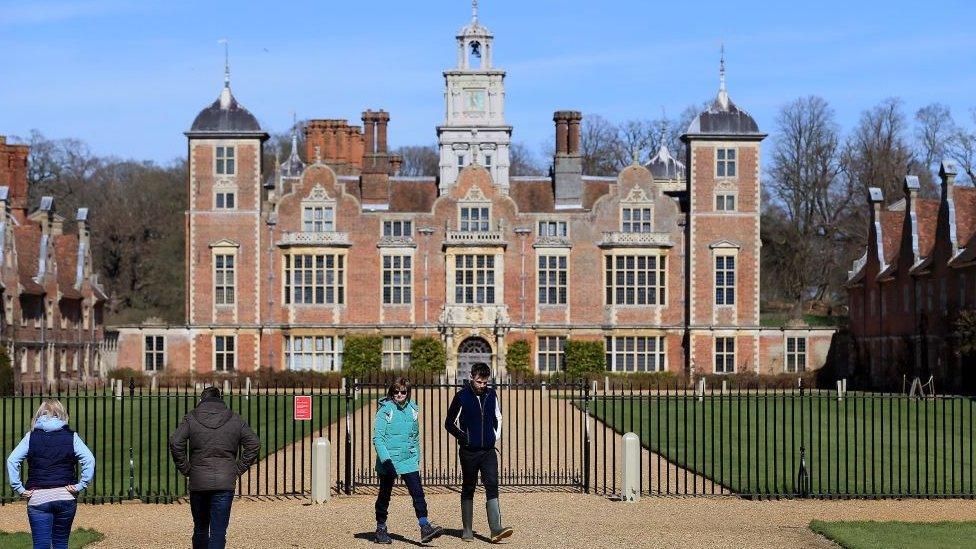
- Published15 April 2020
